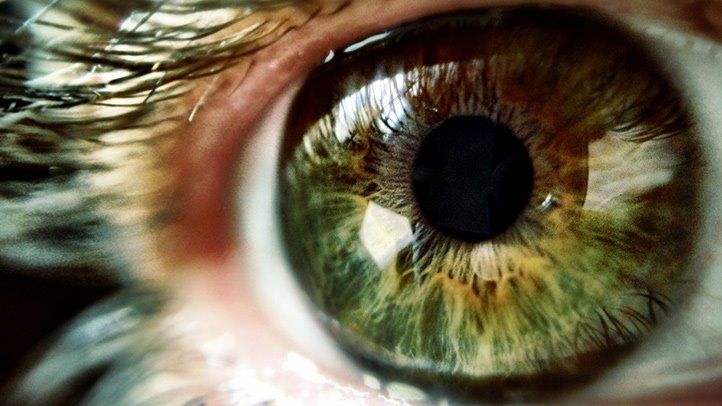Many people are aware that the sun’s radiation can be harmful to health and they should protect their eyes, but the truth is that they are very far from understanding all the severe effects that UV rays can cause.
Excessive exposure to the sun can cause eye diseases such as cataracts.
To understand the correct way to protect your eyes from the sun, you must first understand the different types of radiation emitted by the sun and their effects on your eyes.
UV Rays
Sunlight is made up of electromagnetic radiation. Each of them has its own characteristics (wavelength, frequency, and energy) that make some of them harmful to our eyes.
Types Of Solar Radiation
Depending on the wavelength, we can distinguish 3 types:
Ultraviolet or UV rays:
They are invisible to the human eye but they are the most harmful, so they are the ones you should protect your eyes from the most.
Visible light spectrum:
These are the light rays that the human eye is capable of perceiving. In this spectrum, there is also blue light that is harmful to the retina.
Infrared Rays:
They are the radiation that generates the heat that comes from the sun; they are also invisible to the human eye and under normal conditions do not affect the eye.
On the other hand, the visible light that our retina perceives and transforms into information for our brain is less energetic and its potential to be harmful is much lower.
In turn, ultraviolet light (UV) is divided into UV-C (it is the most energetic and from which we are protected by the ozone layer), UV-B (it is partially filtered by the atmosphere, and the one that reaches us causes long-term cumulative damage), UV-A (responsible for the stimulation of melanin, for tanning and, although they do not burn, they cause deeper damage than UV-B).
[ Also Read- 5 Ways to Maintain Clear Eyesight ]
Reasons why ultraviolet rays pose a risk to our visual health
The sun emits a large number of radiations, much more than our eyes can perceive. We only see light within a certain wavelength range.
The radiation emitted by the sun above or below this range are not visible, which does not mean that they do not exist or that they do not affect us.
The violet colour is at one end of the visible light range. The light that the sun emits with a wavelength beyond the violet colour is what we call ultraviolet light. It is always present, especially when we are under a strong sun.
The central hours of the day during the summer, or when we are in the snow that increases the effect of sunlight, are, therefore, the moments that our body receives more UV radiation.
And it has been shown that overexposure to this light is harmful when it is done in excess, or in an uncontrolled way.
Cataracts, age-related macular degeneration, and degenerative ocular surface injuries, such as pterygium (an abnormal growth brought on by inflamed conjunctiva tissue that tends to migrate from the white region of the eye towards the cornea tissue), are all eye conditions caused by UV radiation (anterior and transparent surface of the eye).
It becomes inflamed due to lack of lubrication, sun exposure, wind, or other irritating agents. These lesions can appear at any age, in people who spend long hours in the midday sun and in UV-intense conditions near rivers, oceans, and mountains,
Other areas of risk for the eyes
Protection in the water:
Use water glasses or protective goggles, some of which may even have the increase that the person needs, when swimming or playing sports in the pool or on the beach to prevent eye irritation.
Seasonal conjunctivitis:
In summer, cases of viral conjunctivitis infections increase by up to 20%. Every two or three years, there are outbreaks that should be prevented through awareness and hygiene.
The chlorinated water in the pools and the crowded environment on the beach increase the risk of contracting this annoying infection.
Attention must be paid to the hygiene of the eye area (for example, washing the face with soap and water when leaving the pool), avoiding sharing towels, and rubbing the eyes with dirty hands, appealing to the use of artificial tears as an ally to maintain our eyes lubricated.
Contact lenses:
If contact lenses are used, they must be removed before entering the pool because microorganisms could adhere, grow there and cause an infection in the cornea.
It is also not convenient to use them in the sea, since the wind, the sand, and the sun are a bad combination.
Proper attention towards the little ones:
Children tend to spend more time outdoors on vacation and, therefore, are more exposed to suffering conditions in their eyes.
For this reason, exposure must be avoided during the hours of maximum intensity, as well as putting on caps or hats and wearing sunglasses with a UV filter from the age of 5 or 6.
It has been shown that more than half of the time we spend exposed to the sun in our lives occurs before the age of 16.
Avoid excess use of air conditioning:
Prolonged use of air conditioning systems induces the so-called “Dry Eye Syndrome”, which causes blurred vision, itching, or burning sensation.
It is advisable to maintain a temperature between 21 to 25 degrees celsius.
Rest from the screens:
It is common to spend long hours in front of the screens of the PC, smartphones, tablets, or TV, this can cause eye fatigue or discomfort. Therefore, it is important to reduce the hours of exposure.
Eat correctly:
Incorporate products rich in vitamins A, E, C and antioxidants such as carrots, green leafy vegetables, or fruits such as apricots, cherries, oranges, and strawberries in the diet. Omega fatty acids- 3 can also help protect against dry eye syndrome.
Periodically check your eyesight:
Go to an eye specialist for a check-up at least once a year to assess the health of your eyes if you have any visual defects. If you are looking for best eye hospitals in Kanpur, you should visit Dr. Jawahar Lal Rohatgi Memorial Eye Hospital once.
Protect your eyes
Optometrists are never tired of emphasising the need to protect our eyes from the ultraviolet radiation emitted by the sun.
They always recommend the use of quality sunglasses with good filters. Sunglasses are not only a fashion accessory for aesthetic purposes.
They are necessary protection to protect your eyes from ultraviolet radiation, in addition to reducing the risk of glare when we drive or, simply, to cushion the annoying sunlight. Sunglasses with a suitable filter prevent UV rays from entering our eyes.
Conclusion:
The specialists in ophthalmology specify that the level of radiation is related to the intensity of the brightness of the light and is greater when reflected in the sand, walls, cement, water, or snow.
In addition, a detail that is not minor is that the damage caused by UV rays is cumulative and exposes the human eye to constant oxidative stress.
Therefore, people of all ages should take precautions when outdoors, wearing eye protection at an early age to shield them from years of ultraviolet exposure.
Reference- Wikiifeed





 Call Us Now
Call Us Now
Leave a Reply